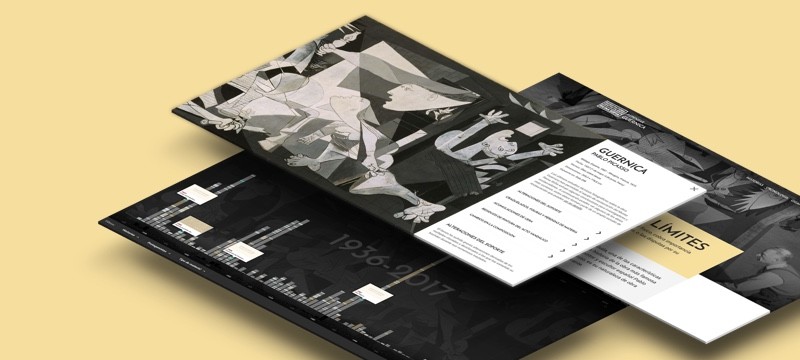Picasso: Guernica, Tokyo, Kyoto, Kuruma, Nagoya, 1962-1963
When, in 1957, arrangements began for the exhibition on Guernica and its studies and postscripts, scheduled to take place in 1962 in different cities in Japan, the idea was to include the original painting. Yiro Enjoji, a member of the show’s Organising Committee, wrote to René d’Harnoncourt, the then director of Museum of Modern Art (MoMA) in New York, to submit a request for the loan of the painting. Alfred H. Barr Jr., however, immediately intervened and, in accordance with the conservation study that had been carried out on the painting that same year, recommended against its departure due to its current state and deterioration. Accordingly, John Rockefeller was informed of this request given that the previous year his son had commissioned a replica tapestry of the painting.
In 1956 Nelson Rockefeller received the tapestry he had commissioned to Jacqueline de la Baume Dürrbach’s textile workshop in Aubusson (France), which specialised in producing replicas of artworks using this technique. Pablo Picasso, an admirer of the tapestries it produced, approved and supervised the execution of the piece, and was subsequently so enthused by it that he signed a contract for two more, only with slight differences and alterations in the colour tones. After MoMA’s refusal to loan Guernica for the exhibition to be held in Japan in 1962, the Art Friend Association, entrusted with its organisation, submitted a request to Nelson Rockefeller for the loan of his tapestry. As a result, Carol K. Uht, curator of the Rockefeller collection, headed the arrangements and the tapestry left the Albany mansion, its permanent place of residence, to be exhibited between September 1962 and April 1963.
At a time of international political frailty and tension in Asia, the exhibition toured four cities in Japan: Tokyo (3 November – 23 de December 1962), Kyoto (16 January – 17 February 1963), Kurume (23 February – 10 March 1963), and Nagoya (16–31 March 1963). Over the course of these months, the communication between Carol K. Uht, Nelson Rockefeller and the organisers was seamless, and they informed of the show’s success in its travels around different cities, underlining the tapestry as the standout piece at the event. Shortly after the opening in Tokyo, they wrote to Pablo Picasso to notify him of the exhibition’s positive reception from the Japanese public, stressing how it appealed to the Japanese people, who, after the suffering of World War Two, and in particular the atomic bomb attacks by the US army on Hiroshima and Nagasaki, could relate to and deeply appreciate the work. With that in mind, the presence of the tapestry as a replacement for the original was a reaffirmation that its iconic status could surpass its physical presence.



